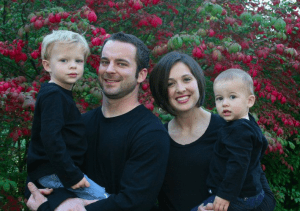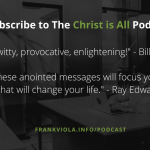 When Bill Hybels (not the image) came up with the idea of “seeker-sensitive services” his aim was to preach or teach in such a way that it didn’t turn off the nonChristian visitor. In fact, Willow Creek sought to create services — weekend services — that were attractive to nonChristians and that drew upon the questions of those far from God. So Bill learned to “preach” to mixed audiences.
When Bill Hybels (not the image) came up with the idea of “seeker-sensitive services” his aim was to preach or teach in such a way that it didn’t turn off the nonChristian visitor. In fact, Willow Creek sought to create services — weekend services — that were attractive to nonChristians and that drew upon the questions of those far from God. So Bill learned to “preach” to mixed audiences.
Once a friend invited me to Nassau Bahamas to speak at his church, which was a seeker-friendly church (he’s now a Roman Catholic, so he didn’t stick with the seeker-friendly model). To make a long story short, I spoke from Colossians (if my memory serves me right) and did my best, after his rather frequent explanations, to use language that was “seeker-sensitive.” When I was done I asked him how I did and the impact of what he said went about like this: “Not.Even.Close!”
What is this mixed audience speaking like? What are the marks of doing it well? By the way, do you think “non-believers” attended early Christian worship gatherings? Do you think the sermon of Paul on the Areopagus in Acts 17 is “seeker-sensitive”?
Ask Andy Stanley, because in his book Deep & Wide he talks about this. Most of us have an environment designed for believers and church people; so we’ve learned to speak to churched people. Andy’s goal for his sermons is to present the Scriptures so they are helpful and compelling so that everybody in the audience is glad to have attended and leaves with the intention of returning. [This does not mean watering down the content or offensiveness of the gospel.]
Here are his seven principles, but it’s not about content but about presentation and approach:
1. Let them know you know they’re out there and you’re happy about it.
2. Begin with the audience in mind, not your message. [I often say I teach students a subject, not a subject to students.]
3. Pick one passage and stick with it … everybody will be glad you did.
4. Give them permission not to believe … or obey. [This fits his theory of involving the audience.]
5. Avoid “The Bible Says” … because it doesn’t. It’s not a book; it’s way better than that. Cite authors, not “the Book.” Don’t assume they know.
6. Acknowledge the odd… it would be odd not to. Natural vs. supernatural, blue parakeet passages…
7. Don’t go mystical … unless you want a new car.











